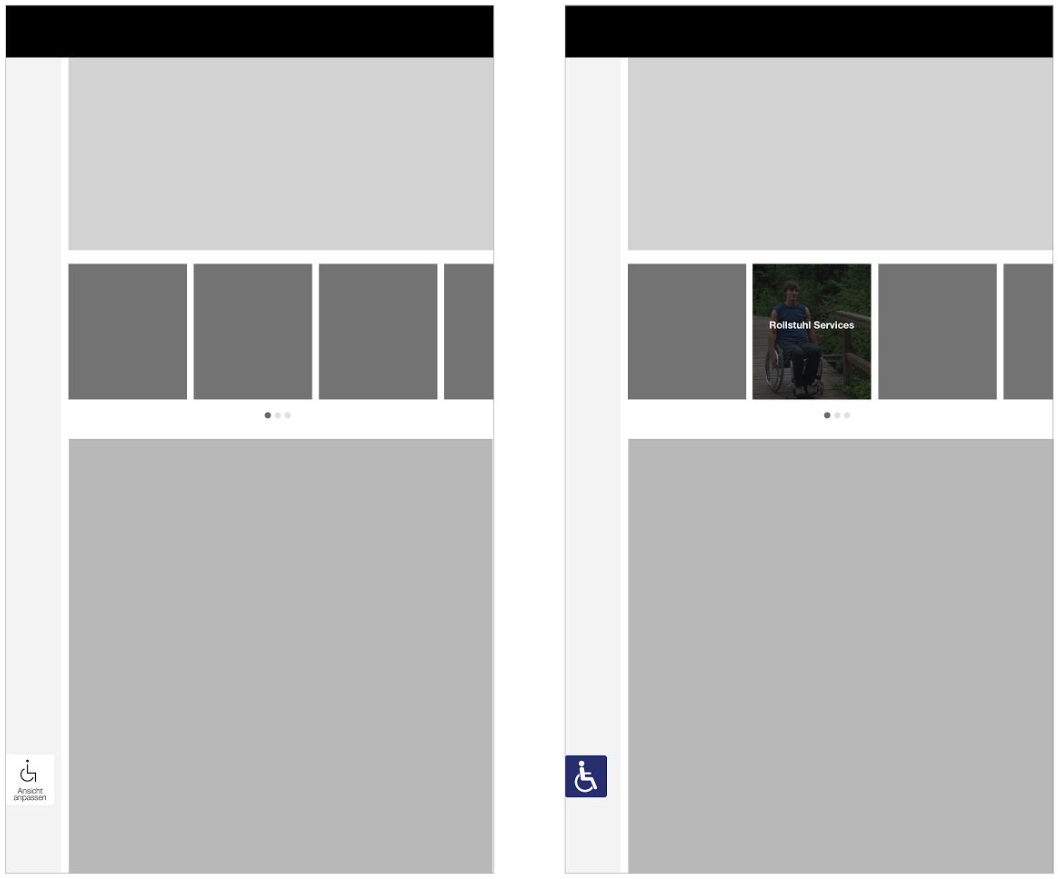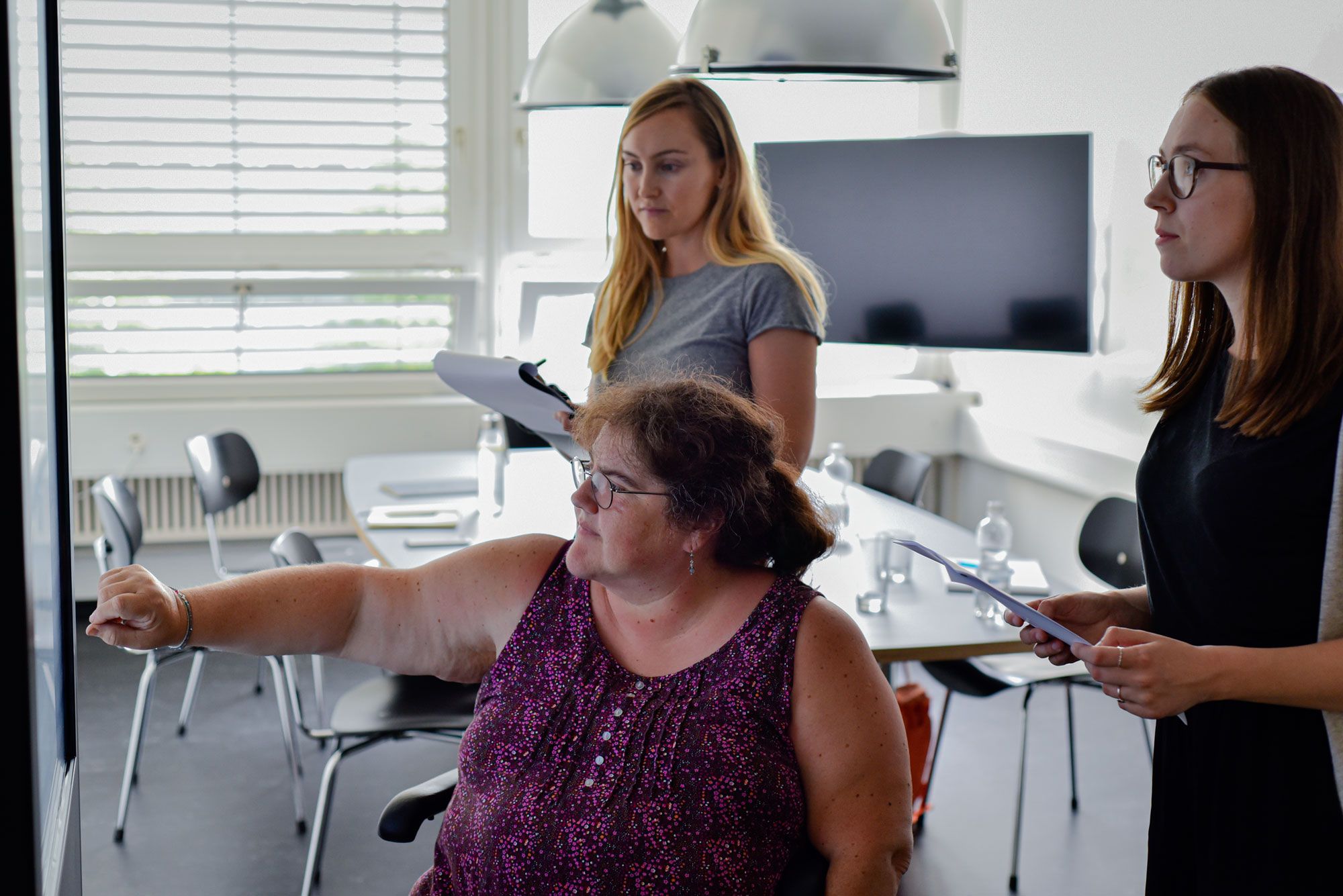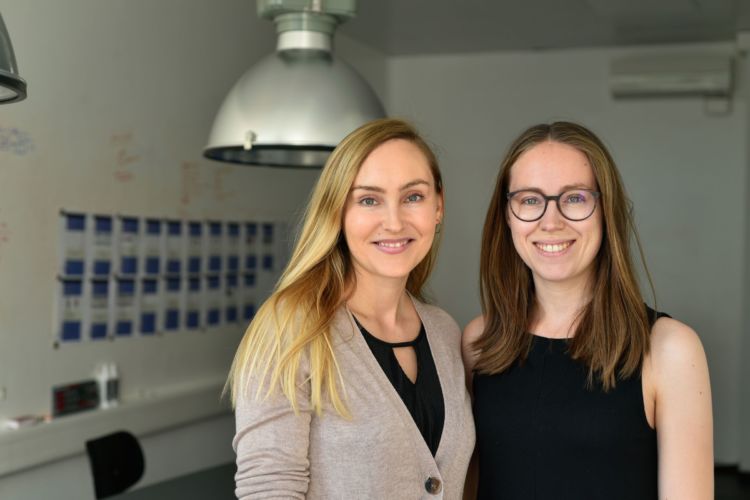A valued partner of TestingTime, Gotomo specializes in user experience, mobile marketing, and service design. The modular service portfolio spans the entire product development process and allows clients to opt for start-to-finish support as well as for individual services like prototyping and usability testing.
A unique challenge
Recently, a client tasked Gotomo with designing the content for their digital information boards in public spaces. Unlike designing for desktop and mobile, designing for this extraordinarily large, upright format posed a unique challenge for the team: creating equally noticeable, reachable, and usable elements for people standing in front of the touchscreens as well as for wheelchair users sitting in front of them.
Pascale Anderegg, Gotomo’s interaction designer, says: “As with all design, you have to consider the real user’s pain points and needs. It’s just that with inclusive design, that real user has a disability.” So the team at Gotomo decided to conduct UX research with wheelchair users.
Initially, they tried to recruit these wheelchair users through TestingTime. Unfortunately, however, we weren’t able to deliver in time for the first round of tests. But that didn’t stop Gotomo: the team contacted clients and friends of friends until they had three out of the five wheelchair users they had initially hoped for.
A lucky break
The team developed a prototype and conducted usability tests. And as luck would have it, all three sessions produced very consistent data. Gotomo’s service design and innovation management specialist Aline Stehrenberger says: “Generally, we like to test each prototype with at least five people before we iterate. But in this case, the responses were so similar that we felt confident in our insights.”
The key insights were:
- The wheelchair users appreciated being able to access information that is highly relevant to them via a digital information board.
- Being able to see which routes (e.g. from one building to another) and areas (e.g. bathrooms) are wheelchair accessible is very useful. On-call assistance services, on the other hand, are unnecessary as wheelchair users tend to organize everything they’ll need in advance.
- The wheelchair users expected the wheelchair icon labeled “adjust view” (“Ansicht anpassen” in German) to simply move the already displayed content further down for them. Once they were made aware that it actually activates a menu with services and information specifically tailored to them, they were delighted.
Consequently, the next prototype featured a visually more noticeable icon as well as an additional field indicating the availability of services and information specifically for wheelchair users.
In addition to these design changes, Gotomo also adjusted the personalized information and services according to the wheelchair users’ feedback: they put a stronger emphasis on the most relevant information and reduced the number of total services.
The next round of tests confirmed that these changes improved the user experience.

Compared to the first prototype (left), the second prototype (right) has a visually more noticeable icon as well as an additional field indicating the availability of services and information specifically for wheelchair users. Also, the information and services provided are limited to those relevant to wheelchair users.
A world full of happy users
Though not nearly as many as we’d like, TestingTime did eventually manage to recruit some wheelchair users for Gotomo’s second round of tests. The first one was Jeanette Schühle-Koch, co-president of the Wheelchair Club in Zurich. And we were especially pleased when she told us why she’d agreed to sign up and participate: “Because companies need to hear what real wheelchair users appreciate in a product or service. How else can we expect them to tailor their offering to us?”

Test user Jeanette (center) wants companies to hear what real wheelchair users appreciate in a product or service.
We couldn’t agree more. Which is exactly why we encourage wheelchair users and people with all types of disabilities to join our test user pool. We want to enable our customers to research and design solutions that are usable for as many people as possible. Because that’s our vision at TestingTime: a world full of happy users.
Apropos, Gotomo is helping us get a big step closer to our goal: they’ve concluded their research with wheelchair users and are currently testing their digital information boards with people with different visual impairments. Way to go, Gotomo!
Are you interested in testing your products and services with people with disabilities? Our team can’t wait to hear about your project.
For more accessibility-related content, head over to ? testingtime.com/accessibility.

